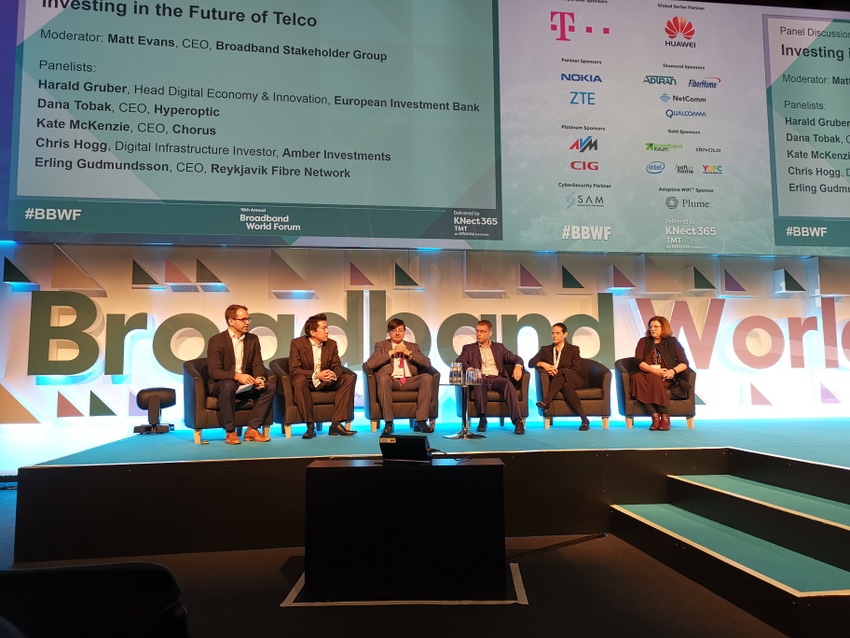Shareholder attitudes on fibre are shifting – investor
Some telcos might have been afraid of committing to fibre deployment due to the vast expense and potential shareholder backlash, but attitudes are changing.
October 31, 2018

Some telcos might have been afraid of committing to fibre deployment due to the vast expense and potential shareholder backlash, but attitudes are changing.
Over the last few years the need to invest in fibre has become increasingly evident, though progress is incredibly varied. Forward-looking telcos, Orange for instance, have been pumping cash into fibre deployment for years, while stuttering operators such as BT and Deutsche Telekom has chosen alternative technologies in an incredibly short-sighted move, maybe satisfy the bloodhounds in the annual general meeting, and the rising demands of the consumer.
While technologies such as G.Fast or vectoring might be appealing to the accountants, with the gigabit-economy around the corner, the shortfall is starting to look quite obvious. What was initially sold as a cunning move now looks to be nothing more than delaying the inevitable, with the overall result a net loss. But with attitudes towards fibre changing, the intensity of fibre rollouts might just increase. And it isn’t a moment too soon.
“We’ve seen the evolution of fibre as an asset class which is becoming much more accepted and more confidence in the take up and monetization potential of fibre,” said Chris Hogg, Investment Director at Amber Infrastructure, speaking on a panel session at Broadband World Forum in Berlin. “As an investor, we are getting a lot more confidence in the ability of the market to maintain the uptake level. It becoming a lot more visible and a lot easier to have confidence in these projects.”
Hogg’s position does offer him considerable credibility in making such comments, though he does work for a fund which specifically targets infrastructure projects and companies. This might not be the common attitude amongst the investor community. Kate McKenzie, CEO of wholesale network operator Chorus, does however confirm his position.
“We have definitely seen a change,” said McKenzie. “When we first started investors were sceptical about market adoption, but now investors are asking how they can go faster with the rollout.”
The issues from yesteryear were relatively simple. With profits being squeezed at the telcos thanks to the intervention and disruption of the OTTs, shareholders asked whether such vast expenditure on fibre was necessary. Firstly, did the network need such a facelift when it is dealing with the demands of the 3G and 4G world, and secondly, would the consumer appetite for fibre be there? Some investors doubted the business case, and these are the telcos who are falling behind when it comes to fibre rollout.
But what has changed over the last couple of years? Firstly, the consumer has demonstrated he/she is prepared to pay more for fibre connectivity. Secondly, new services emerged (Netflix for example), and new segments grew substantially (gaming) pushing the networks to the limit. Finally, 5G. The first point demonstrated there would be buyers for the new products, while the latter two suggested telcos would not even be able to offer adequate services unless the money was spent.
The takeaway here is simple; spend or die. Unfortunately for those who are late to the party, expenditure will squeezed into a smaller timeframe, while they’ll be playing catch-up in the time consuming task.
With 5G emerging, the investments in fibre become a little bit more palatable for investors however. With the incredible data rates promised with 5G, fibre is a necessity to ensure network performance. And while it might be able to act as a replacement for the last mile for broadband, fixed wireless access, the sites still need to be fibered up. It is as much an opportunity for connectivity as it is a threat to traditional broadband products.
“We’ll always need fibre to service the base stations,” said Dana Tobak, CEO of Hyperoptic, a UK fibre-to-the-premises broadband provider. “Some people think they’ll only need one connectivity technology in the future, but as our appetite grows, we’ll need more routes to the internet.”
For those investors who back fibre deployment plans over the years, well done. Those who were too timid, bad bet, there’s catching up to do now.
About the Author(s)
You May Also Like











_1.jpg?width=300&auto=webp&quality=80&disable=upscale)


.png?width=800&auto=webp&quality=80&disable=upscale)